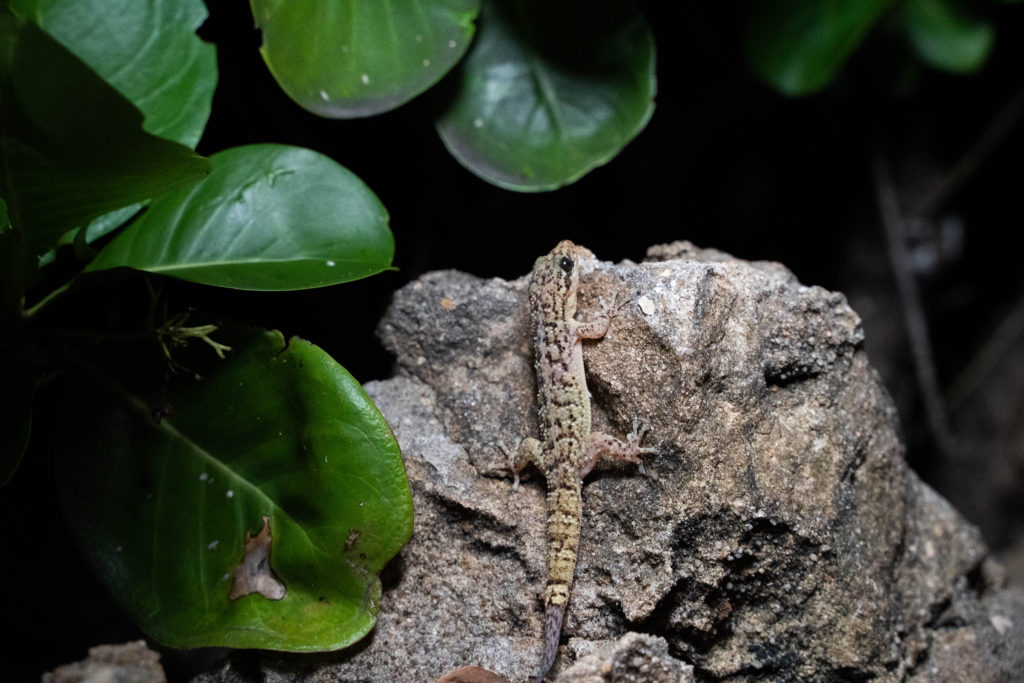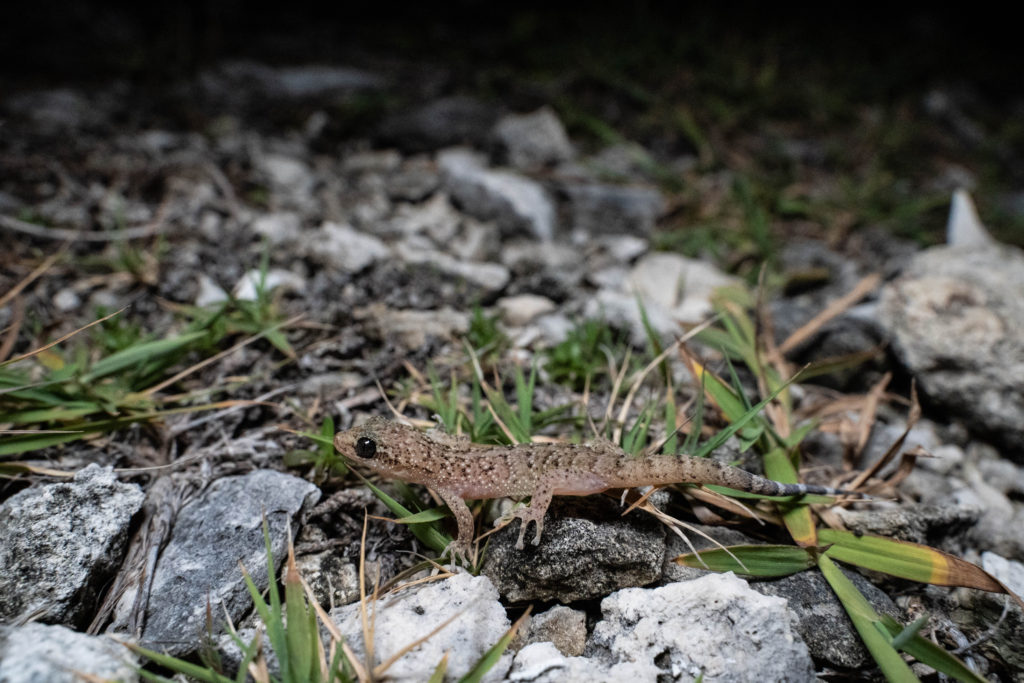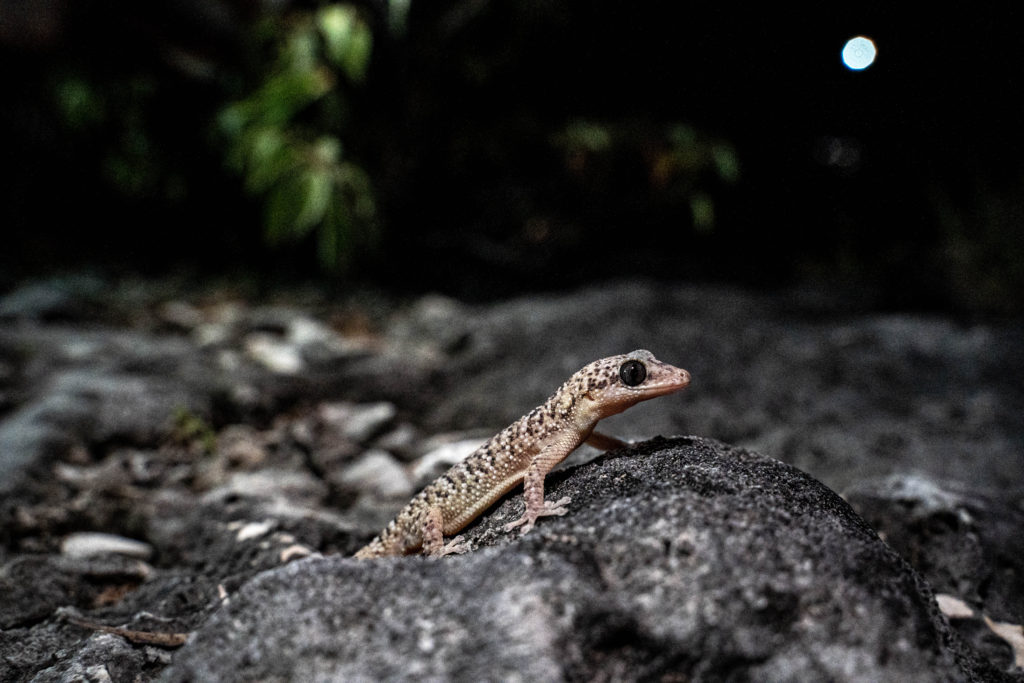Definition of an Endemic Species
Endemic species are plant and animal species that are found in a particular geographical region and nowhere else in the world. Some species are endemic to a continent while the others can be endemic to an island. In our case, did you know we have an Endemic species of Gecko scientifically called “Phyllodactylus Pulcher” or “The Barbados Leaf-Toed Gecko?


“The endemic leaf-toed gecko Phyllodactylus pulcher was re-discovered in 2011 after several decades of being assumed extinct. Subsequent studies have indicated low densities (0.04 geckos/m2; Williams, 2014; Williams et al 2015) in small areas of limestone cliff habitat on the north and south east coasts of Barbados. Assessed as Critically Endangered (IUCN, 2017), invasive predatory species have been observed to overlap in range with the gecko. Of most concern are rats and mongooses, although cats and centipedes (D.C. Blades, pers. obs.) are also responsible for mortality. Tail loss or autotomy in P. pulcher is prevalent and suggests a high risk of predation.

In addition, the invasive Hemidactylus mabouia house gecko, may be a competitor and is found in built habitat adjacent to habitat of the endemic gecko. The primary objective of the current project is to address the specific challenge posed by invasive mammalian and other predators. Phyllodactylus pulcher will be protected in situ through predator removal and exclusion fencing. The enclosure site may be used to display what is one of Barbados’ only endemic vertebrate species within a confined but natural setting, for educational, research and possibly ecotourism purposes.

Scope of work
The scope of work to implement this Pilot Project includes (1) identification of the location, type of enclosure, and identification of control sites. This will require preliminary assessment of gecko density and rat/mongoose density at potential sites, and whether fencing of the area is feasible (structure, size, materials etc) and can be built within the available budget. It will also require seeking the permission of land owners, and consideration of issues such as security and long term maintenance; (2) Design, construction and installation of fencing; (3) Initial removal of invasive species through trapping and poisoning; (4) Augmentation of gecko microhabitats; (5) Ongoing monitoring of gecko density inside the enclosure (and at control sites), and of breaches of the enclosure by invasive species; (6) A public awareness campaign; and (7) A long term plan for sustaining the bio-secure area post-GEF funding.”
As you can imagine, this is of national importance that we preserve this species and ensure they lead a long and fruitful existence on our beautiful Island! To ensure this is done the below task with their accompanying methods have been implemented to assist with this preservation exercise:
TASK 1: Identify potential sites for the bio-secure area
Methods
Potential habitat is known and described based on existing knowledge of P. pulcher distribution and abundance (Williams et al; Blades, D.C. unpubl data).
Estimates of Phyllodactylus gecko abundance will be made using nocturnal spot checks at all sites and on Capture-Mark-Recapture. All sightings will be GPS-ed and mapped.
Potential sites will be ranked based on spot check results, micro-habitat suitability, land ownership, stakeholder use, and security at night. Site selection will be dependent on whether an enclosure fence can be designed, constructed and installed. Expert advice is therefore needed in determining a final site.
Consultants (likely from Wildlands Consultants Inc. – the consulting arm of Xcluder © who make the fences that surround the enclosures) will be brought to Barbados to review the sites, and advise on which sites are feasible within the available budget. The Consultants will present their findings to the Ministry and a final decision will be made by the Ministry and UWI.
TASK 2: Design, construct and install pest-proof fence
Methods
Following preliminary discussions with Xcluder©, given the corrosive sea cliff environment, the fence and fixtures will likely need to be built using full stainless steel, with an aluminium overhang (e.g. Figure 2) and the fence will require a concrete footing (e.g. Figure 3). The fence will require a maximum mesh size of 13mm to keep rats out (Bell, 2014). Fence height should be at least one metre with a 2-3 m clearance zone outside of the fence. The fence will need a secure access gate.
Pen trials using different fence designs will be used to determine the best fence to keep out rats, mongoose, cats, house geckos, and possibly centipedes and monkeys. These trials will help to confirm which design is appropriate.


Remember, there is lots of time in research and physical effort that needs to go into the requisite research first, then the execution of creating a safe habitat is the work of those devoted to preserving the species, but this species is one we can call our own so the reward is seeing it thrive.

TASK 3: Remove invasive species
Methods
Advise on removal of invasives will be sought from experts with experience in this task. Bait stations will be set up across the enclosure. Klerat © brodifacoum anticoagulant poison in wax block form secured within bait stations will likely be used. This poison is effective against rats and mice and is a single-feed kill. It does not affect reptiles. Since the bait stations will be within the enclosure, accidental poisoning of non-target animals is unlikely. Public awareness (Task 6) will include signage to prevent people tampering with the bait stations.
Mongoose removal: Baited live traps (with chicken necks) will be used to remove mongooses. Traps will be checked daily and mongooses will be humanely euthanized.
Cats, house geckos and centipedes will be removed by hand.
Dead rats will be collected daily and disposed of appropriately.
Rat baiting will continue until track pads and chocolate bait indicate that all rats have been removed. Mongoose trapping will continue until no more mongoose are trapped.
TASK 4: Augment microhabitat
Methods
Williams et al (2016) have shown that P. pulcher prefer narrow, horizontal crevices for refuge. Different designs of boulders and breezeblocks will be trialled separately in areas outside of the enclosure and control sites. If supplementation of suitable micro-habitat proves to increase gecko abundance, its use within the enclosure will be considered.
TASK 5: Monitoring gecko abundance and recovery
Methods
A C-M-R monitoring programme (see Task 1 for methodology) will be established that will monitor gecko abundance. Captured animals will be aged and sexed based on cloacal spurs, femoral pores and hemipenal bulge (males). Length (Snout-vent) to 0.5mm will be measured with Vernier calipers and weight to 0.5g will be measured with a 60g Persola spring balance. Tail autotomy will also be recorded.
Changes in crawling insect abundance (and possibly flying insect if suitably wind-resistant equipment can be found) will be assessed using pitfall traps (containers within permanent PVC pipes sunk into the ground).
Monitoring of geckos and insects will be conducted quarterly within the enclosure and at the control sites for the three years of the project and thereafter based on the long term plan to sustain the enclosure.
TASK 6: Public awareness campaign.
Methods
Currently, many Barbadians are unaware of the existence of the endemic gecko. Awareness will be increased by the preparation of short videos for screening on the local TV station, articles for newspapers and for social media. A Facebook page already exists for the gecko (managed by D.C. Blades) and the content on this page will be increased and updated regularly with information on the biosecure area. National legislation protecting the gecko from export will be emphasised. However, once the area is established and public awareness is increased, it will be important that it be adequately monitored to prevent persons from entering and removing geckos.
TASK 7: Long term plan for sustaining biosecure area.
Methods
Funding will be obtained to employ personnel to monitor the fence to prevent breaches, to make repairs and to conduct baiting and trapping as required. Various options for funding might include the establishment of a Trust for the gecko.”





[…] Green and Blue Economy developed a national logo for World Biodiversity Day. It features a Barbados leaf-toed gecko, a hawksbill turtle, flowers from a Metastelma barbadensis vine, and an Agave barbadensis in bloom […]